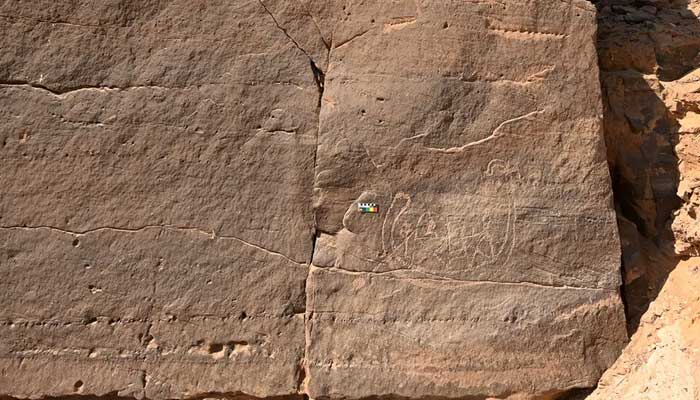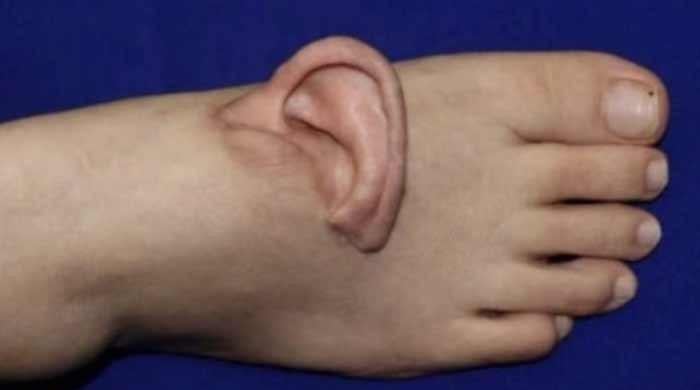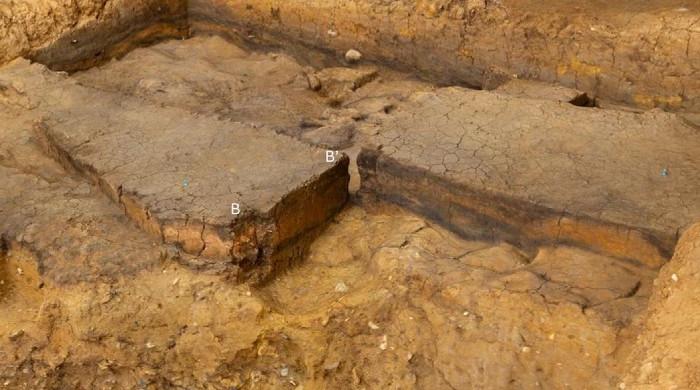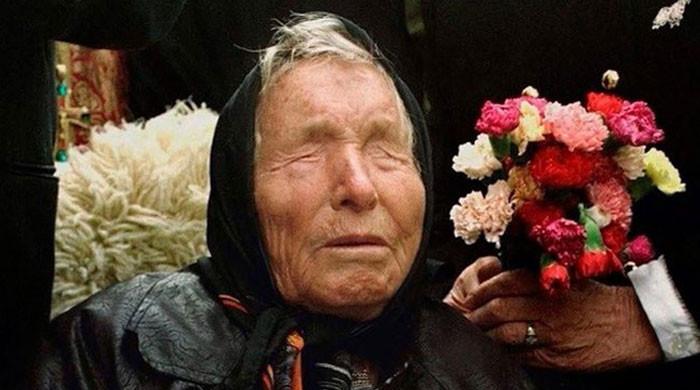Ancient Egyptian rock art near Aswan may date to early first dynasty
Carving shows boat that appears to contain royal figure, though only head, right shoulder are visible
July 13, 2025

A newly analysed ancient Egyptian rock engraving may date back as far as 5,100 years, possibly to the beginning of the first dynasty, according to a recent study.
The carving shows a boat that appears to contain a royal figure, though only the head and right shoulder are visible. Its style closely resembles other Egyptian rock art from the protodynastic and early first dynasty periods—eras that remain poorly understood by archaeologists. Researchers suggest this discovery could offer new insights into the early development of the Egyptian state, reported Live Science.
"Boats are among the most frequently recurring motifs in Egyptian iconography," study author Dorian Vanhulle, director and curator at the Musée du Malgré-Tout in Belgium, said in a statement. "During the Predynastic and Protodynastic periods (c 4500-3085 BC), the periods which foreshadowed Pharaonic Egypt, the boat is ubiquitous and invested with complex ideological and symbolic meanings."
The "intriguing new" rock engraving was discovered in November 2022 on the west bank of the Nile near Aswan, during a survey documenting local rock art ahead of the development of New Aswan City, according to Vanhulle’s study, published Thursday (July 10) in the journal Antiquity.
The carving features a detailed boat being pulled to the right by five figures, Vanhulle noted. At the rear of the boat, one person stands holding an oar, while next to them is an enclosed space—possibly a cabin—that appears to contain a seated figure.
This seated person might represent a royal figure, Vanhulle suggested. However, the lack of preserved details makes interpretation challenging. The figure has an elongated chin, a feature often seen in early ruler depictions and thought to represent the false beards worn by kings starting from the First Dynasty. There’s also a "vertical stroke" on the person’s head, which could indicate a type of headdress, he added.









